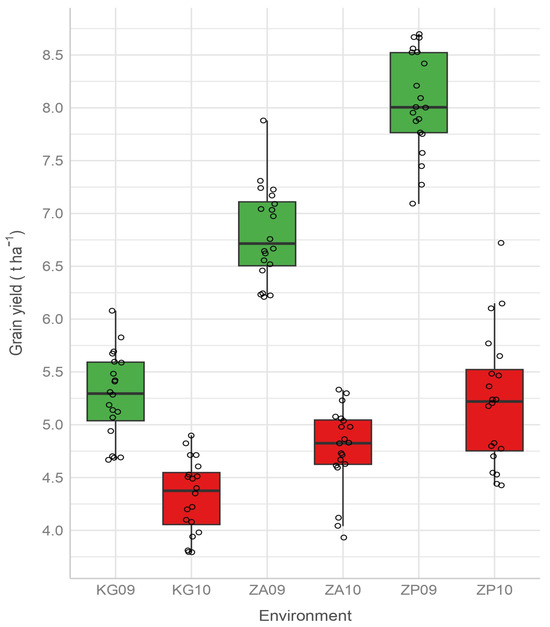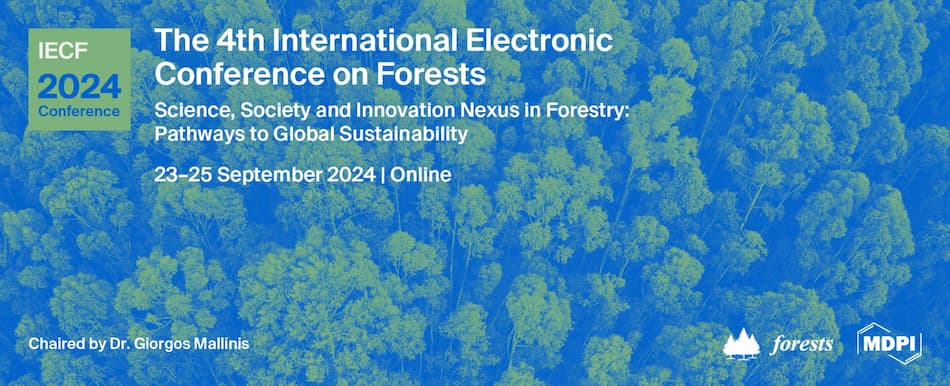-
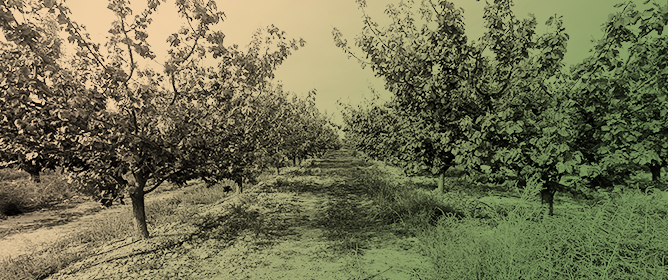 Threshold Values of Plant Water Status for Scheduling Deficit Irrigation in Early Apricot Trees
Threshold Values of Plant Water Status for Scheduling Deficit Irrigation in Early Apricot Trees -
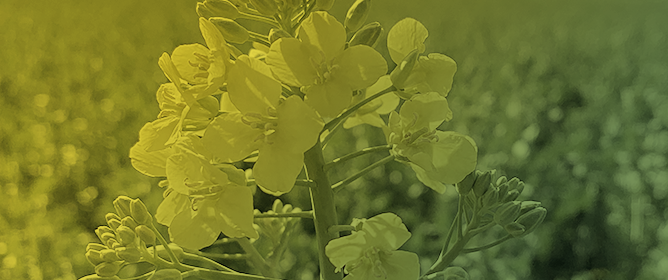 Turnip Yellows Virus Field Infection in Oilseed Rape: Does It Impact the Yield and Quality?
Turnip Yellows Virus Field Infection in Oilseed Rape: Does It Impact the Yield and Quality? -
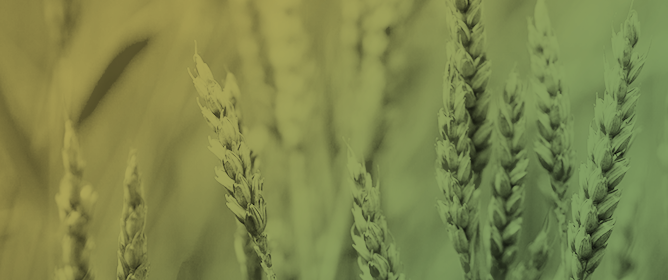 STICS Soil–Crop Model Performance for Predicting Biomass and Nitrogen Status of Spring Barley Cropped for 31 Years in a Gleysolic Soil from Northeastern Quebec (Canada)
STICS Soil–Crop Model Performance for Predicting Biomass and Nitrogen Status of Spring Barley Cropped for 31 Years in a Gleysolic Soil from Northeastern Quebec (Canada) -
 Control Efficacy of Natural Products on Broadleaf and Grass Weeds Using Various Application Methods
Control Efficacy of Natural Products on Broadleaf and Grass Weeds Using Various Application Methods -
 Tillage, Manure, and Biochar Short-Term Effects on Soil Characteristics in Forage Systems
Tillage, Manure, and Biochar Short-Term Effects on Soil Characteristics in Forage Systems
Journal Description
Agronomy
Agronomy
is an international, peer-reviewed, open access journal on agronomy and agroecology published monthly online by MDPI. The Spanish Society of Plant Physiology (SEFV) is affiliated with Agronomy and their members receive discounts on the article processing charges.
- Open Access— free for readers, with article processing charges (APC) paid by authors or their institutions.
- High Visibility: indexed within Scopus, SCIE (Web of Science), PubAg, AGRIS, and other databases.
- Journal Rank: JCR - Q1 (Agronomy) / CiteScore - Q1 (Agronomy and Crop Science)
- Rapid Publication: manuscripts are peer-reviewed and a first decision is provided to authors approximately 15.8 days after submission; acceptance to publication is undertaken in 2.4 days (median values for papers published in this journal in the second half of 2023).
- Recognition of Reviewers: reviewers who provide timely, thorough peer-review reports receive vouchers entitling them to a discount on the APC of their next publication in any MDPI journal, in appreciation of the work done.
- Companion journals for Agronomy include: Seeds, Agrochemicals, Grasses and Crops.
Impact Factor:
3.7 (2022);
5-Year Impact Factor:
4.0 (2022)
Latest Articles
Interpreting the Interaction of Genotype with Environmental Factors in Barley Using Partial Least Squares Regression Model
Agronomy 2024, 14(1), 194; https://doi.org/10.3390/agronomy14010194 (registering DOI) - 16 Jan 2024
Abstract
Genotype by environment interaction (GEI) is a complex problem that complicates the barley selection and breeding process. The knowledge of the relationship between cereal phenology and climatic data is important for understanding GEI and the physiological pathways responsible for the interaction effect. The
[...] Read more.
Genotype by environment interaction (GEI) is a complex problem that complicates the barley selection and breeding process. The knowledge of the relationship between cereal phenology and climatic data is important for understanding GEI and the physiological pathways responsible for the interaction effect. The grain yield of twenty winter barley genotypes in six environments was observed. Factors influencing the variability were analyzed using a linear mixed model. The partial least squares regression (PLSR) model was applied to determine the most relevant environmental variables in certain stages of development that explained GEI effects. Biplot with environmental variables explained 43.7% of the GEI. The barley was generally the most sensitive to the environmental conditions (relative humidity, maximum temperature and its variation, sun hours, and precipitation) during the anthesis and filling stage (May) which caused GEI. Temperature variables did not show significance only in the vegetative phase. Different genotypes responded differently to environmental factors. Genotypes NS-525, NS-589, and J-103 were highlighted as widely adaptable, and Zaječar was a suitable and reliable location for yield testing. The GEI information presented in this paper can be useful in traditional plant breeding and future breeding programs through molecular research of crop developmental genes and examination of physiological processes in two-row barley.
Full article
(This article belongs to the Special Issue Crop Biology and Breeding under Environmental Stress)
►
Show Figures
Open AccessArticle
The Effect of Soil Microbial Residues-Mediated Nitrogen Conservation and Supply during the Growing Season on Nitrogen Uptake by Wheat
by
, , , , , , , , , , , and
Agronomy 2024, 14(1), 193; https://doi.org/10.3390/agronomy14010193 - 15 Jan 2024
Abstract
Microbial residue nitrogen can indicate soil quality and is crucial for soil nitrogen retention and supply. However, it is still unclear how the dynamic changes in soil microbial residue nitrogen affect crop nitrogen uptake in agricultural practice. Based on a long-term wheat-maize rotation
[...] Read more.
Microbial residue nitrogen can indicate soil quality and is crucial for soil nitrogen retention and supply. However, it is still unclear how the dynamic changes in soil microbial residue nitrogen affect crop nitrogen uptake in agricultural practice. Based on a long-term wheat-maize rotation experiment with different nitrogen application rates (150 kg N ha−1, 200 kg N ha−1, and 300 kg N ha−1), 15N-labeled nitrogen fertilizer was applied during the wheat season to track the dynamics of soil microbial residue nitrogen and its mediated fertilizer nitrogen. The results showed that nitrogen addition was beneficial to the accumulation of microbial residue nitrogen (mainly fungal microbial residue nitrogen). Its contribution rate to soil total nitrogen is 54.87–56.55%, and the fertilizer nitrogen allocated to it accounts for 27.10–47.50% of the remaining fertilizer nitrogen in the soil. Ultimately, 6.77–10.24% of the nitrogen fertilizer applied remained in the soil as microbial residue nitrogen. In addition, microbial residue nitrogen is mainly mineralized during the jointing and filling stages of wheat. In a word, the accumulation and mineralization of soil microbial residue nitrogen during the application of 200 kg N ha−1 better guaranteed the uptake of nitrogen by wheat, which provided a reliable basis for guiding farmland fertility improvement and nitrogen fertilizer reduction in the North China Plain.
Full article
(This article belongs to the Section Agroecology Innovation: Achieving System Resilience)
►▼
Show Figures
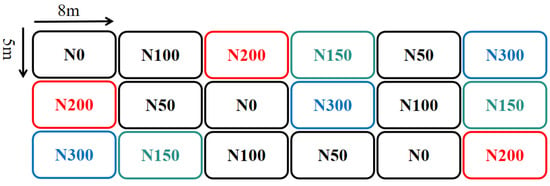
Figure 1
Open AccessArticle
Analysis of Crop Irrigation Water Requirements and Water Scarcity Footprint in the Beijing–Tianjin–Hebei Region Based on the GeoSim–AquaCrop Model
Agronomy 2024, 14(1), 192; https://doi.org/10.3390/agronomy14010192 - 15 Jan 2024
Abstract
To reduce crop-related water consumption and enhance agricultural water resource efficiency in the Beijing–Tianjin–Hebei region, this study employed the AquaCrop model to simulate crop yield and irrigation water requirements and calculated the water scarcity footprint (WSF). The results were as follows: (1) The
[...] Read more.
To reduce crop-related water consumption and enhance agricultural water resource efficiency in the Beijing–Tianjin–Hebei region, this study employed the AquaCrop model to simulate crop yield and irrigation water requirements and calculated the water scarcity footprint (WSF). The results were as follows: (1) The AquaCrop model exhibited strong applicability, with R2, RMSE (Root Mean Square Error), EF (Nash–Sutcliffe model efficiency coefficient) and d values of 0.9611, 6.6%, 0.91, and 0.98 (winter wheat), and 0.9571, 5.5%, 0.95, and 0.99 (summer maize) for canopy cover simulation. Similarly, aboveground biomass simulation yielded values of 0.9661, 0.8 t/ha, 0.93, and 0.98 (winter wheat), and 0.9087, 1.3 t/ha, 0.90, and 0.98 (summer maize). Winter wheat soil moisture content simulation showed an R2 of 0.9706, RMSE of 3.7 mm, EF of 0.93, and d of 0.98. (2) The AquaCrop model simulated the winter wheat and summer maize yields and irrigation water requirements for the years 2009, 2014, and 2019, validating the scalability and spatial visualization capabilities of GeoSim in extending AquaCrop simulations. (3) Integrating the water footprint and the water resources system, this study assessed the WSFs of winter wheat and summer maize. From 2009 to 2019, winter wheat production in the region increased by 25.08%, and summer maize production increased by 37.39%. The WSF of winter wheat decreased, whereas the WSF of summer maize increased. It is recommended to reduce crop cultivation areas in regions such as Daming County, Ningjin County, and Dingzhou City while further improving irrigation water efficiency, which would facilitate the sustainable utilization of water resources in the area.
Full article
(This article belongs to the Section Water Use and Irrigation)
Open AccessArticle
Removal of Crop Ion Components in Relation to Mollisol Acidification under Long-Term Management
Agronomy 2024, 14(1), 191; https://doi.org/10.3390/agronomy14010191 - 15 Jan 2024
Abstract
Crop removal of cations and anions is one of the main factors causing soil acidification. Mollisols, also known as black soils, which are inherently neutral soils, have been acidified due to irrational land use. However, the magnitude of acidification of black soils in
[...] Read more.
Crop removal of cations and anions is one of the main factors causing soil acidification. Mollisols, also known as black soils, which are inherently neutral soils, have been acidified due to irrational land use. However, the magnitude of acidification of black soils in relation to crop removal under crop rotation and field management remains unclear. In this study, we collect soil samples from 9- and 10-year long-term trials with seven treatments of soybean and corn monoculture, and corn–soybean rotation under different fertilization or straw return in the Mollisol region of Northeast China. Total removal of cations and anions is 371–508 and 92–125 kg ha−1 in corn but 166–250 and 56–82 kg ha−1 in soybean, which leads to the production of 7.06–10.2 kmol ha−1 H+ for corn and 4.43–5.77 kmol ha−1 H+ for soybean. Among the four cations (K+, Ca2+, Na+, and Mg2+) analyzed in different tissues of crops, K+ contributes more to the total H+ production, where K+ in corn stem contributes more than 55% H+, while K+ in soybean seed contributes more than 64% H+. The sum of Ca2+ and Mg2+ removal for soybean is 37.6–66.9 kg ha−1, 1.26–2.07 times (p < 0.05) greater than for corn. Net H+ produced by corn and soybean removal may potentially lead to a soil acidification of 0.053–0.074 and 0.032–0.045 year−1 units pH, respectively. The greater the corn or soybean biomass, the higher the net H+ production. Continuous soybean and combination of chemical fertilizer for corn but no chemical fertilizer for soybean reduce the soil pH buffering capacity (pHBC), while other treatments increase the soil pHBC, but there is no effect for continuous corn. Compared to normal corn–soybean rotation, soil pH in 9-year continuous corn declines from 5.76 to 5.63, while 10-year continuous soybean declines from 5.68 to 5.43 (p < 0.05). However, soil pH with chemical fertilizer for corn and dairy manure for soybean increases by 0.60 and 0.89 units (p < 0.05). Changes in pH might not be fully related to crop ion removal. Manure application with crop rotation is an effective approach to alleviate soil acidification.
Full article
(This article belongs to the Special Issue Effects of Cover Crops, Crop Rotation, and Intercropping on Natural Soil Fertility)
Open AccessReview
The Clothes Matter—Exploiting Agronomical Functions of Trichogenic Selenium Nanoparticles Sharing Activities with Biological Systems Wherein (Were) Formed
by
, , , , and
Agronomy 2024, 14(1), 190; https://doi.org/10.3390/agronomy14010190 - 15 Jan 2024
Abstract
The formation of biogenic selenium nanoparticles (SeNPs) through microbial activities is a promising technique that can contribute to the development of reliable, non-toxic and environmentally friendly synthesis methods. Among these, under optimal conditions, myconanotechnology confers particular characteristics due to the generation of bioactive
[...] Read more.
The formation of biogenic selenium nanoparticles (SeNPs) through microbial activities is a promising technique that can contribute to the development of reliable, non-toxic and environmentally friendly synthesis methods. Among these, under optimal conditions, myconanotechnology confers particular characteristics due to the generation of bioactive fungal metabolites with various bioactivities. The formed SeNPs are known to be stabilized by the biomolecules of the microorganism, forming a so-called bio-corona or capping structure. The composition of this bio-corona greatly impacts the SeNPs activity, but investigations have been limited to date. The SeNPs produced by Trichoderma sp. have potential applications in crops and environmental management, as both selenium and Trichoderma are known to benefit cultivated plants and phytoremediation. This review summarizes the biosynthesis of SeNPs by Trichoderma sp. and contextualizes the possible correlations between SeNPs and biomolecules produced by Trichoderma; it also provides a missing analysis that could help understand and optimize this process. Biosynthesis methods and probable mechanisms are briefly discussed as well as the role and applications of trichogenic SeNPs as plant protectants, plant biostimulants, and safe biofortifying agents. The knowledge gaps related to mechanisms of trichogenic SeNPs biosynthesis, the control of the desired characteristics for a specific agricultural function, and technology scale-up are discussed in connection with the needed future research directions.
Full article
(This article belongs to the Special Issue Nano(bio)technologies and Nano(bio)materials in Plant Protection and Fertilization Series II)
Open AccessArticle
Chemical Profile of Cell Cultures of Kalanchoë gastonis-bonnieri Transformed by Agrobacterium rhizogenes
by
, , , , and
Agronomy 2024, 14(1), 189; https://doi.org/10.3390/agronomy14010189 - 15 Jan 2024
Abstract
Kalanchoë gastonis-bonnieri Raym.-Hamet & Perrier is a plant used for medicinal purposes in the treatment of several ailments. The aim of this study was to analyze the chemical profile of extracts from K. gastonis-bonnieri embryogenic calli, generated from genetically transformed roots by Agrobacterium
[...] Read more.
Kalanchoë gastonis-bonnieri Raym.-Hamet & Perrier is a plant used for medicinal purposes in the treatment of several ailments. The aim of this study was to analyze the chemical profile of extracts from K. gastonis-bonnieri embryogenic calli, generated from genetically transformed roots by Agrobacterium rhizogenes. Putative transformants were verified by PCR. Hydroalcoholic extracts were obtained and the chemical profile was analyzed by LC-ESI-MS/MS. Root formation was obtained from 80% of infected seedlings. Fifteen root lines were isolated, and two lines showed prominent longitudinal growth and profuse branching in the B5 semi-solid medium. In all lines, the formation of nodules and later embryogenic callus was observed. Putative transgenic root lines were cultivated in free-plant growth regulators B5 medium. In the two selected lines, the PCR amplification of rolA, rolB, rolC, rolD, and aux1 genes was detected. The extract of embryogenic calli showed 60 chemical compounds tentatively identified, such as ferulic acid, quinic acid, neobaisoflavone, and malic acid, among others, and the chemical profile was different in comparison to wild-type extracts. This is the first study reporting the analysis of the chemical profile of hairy root extracts derived from Kalanchoë gastonis-bonnieri. This work displays the great potential for obtaining chemical compounds of pharmacological importance from hairy roots and facilitates the identification of new useful drugs against human chronic-degenerative diseases.
Full article
(This article belongs to the Special Issue Plant Tissue Culture and Plant Somatic Embryogenesis)
Open AccessArticle
Exploring the Diverse Response of Cropland Vegetation to Climatic Factors and Irrigation across China
Agronomy 2024, 14(1), 188; https://doi.org/10.3390/agronomy14010188 - 15 Jan 2024
Abstract
Owing to limited research on the interactions between cropland vegetation and climate and irrigation, this study used the normalized difference vegetation index (NDVI) as a cropland vegetation indicator to describe vegetation dynamics. Potential evapotranspiration (PET) was calculated using the Penman–Monteith equation. A partial
[...] Read more.
Owing to limited research on the interactions between cropland vegetation and climate and irrigation, this study used the normalized difference vegetation index (NDVI) as a cropland vegetation indicator to describe vegetation dynamics. Potential evapotranspiration (PET) was calculated using the Penman–Monteith equation. A partial correlation analysis and a Pearson correlation coefficient were used to determine the spatial response mechanisms of cropland vegetation to different climatic factors and irrigation in China for the period 1985–2015. The results show that different climatic factors (precipitation, PET, and water deficits) display positive correlations with cropland vegetation in China. A stronger correlation was observed between cropland vegetation and meteorological factors in northern China compared to the southern parts; the response time of NDVI values of croplands to precipitation was observed to be short-term (1 to 3 months) and long-term (3 to 6 months) in northern and southern regions, respectively. In contrast, the response time of NDVI values of croplands to PET displayed a complex spatial heterogeneity. Most of the cropland vegetation and the areas with the highest potential crop yields were located in the eastern part of China; these areas also require higher levels of irrigation, which benefits the potential crop yields. This study can provide a better understanding of the agricultural ecosystems and formulate strategies for food security.
Full article
(This article belongs to the Section Water Use and Irrigation)
►▼
Show Figures
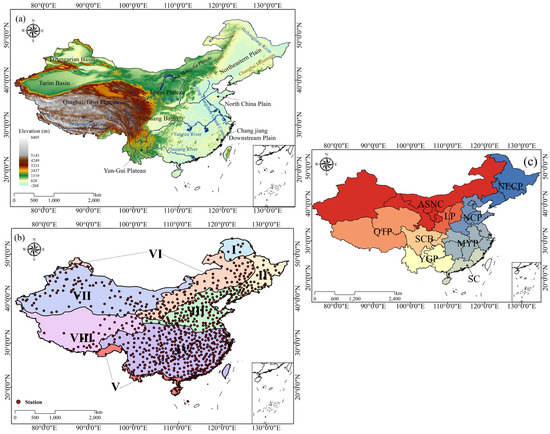
Figure 1
Open AccessArticle
Residues from Medicinal and Aromatic Plants after Distillation Can Be Used in Replace Some Peat in the Growing Media for Viola × wittrockiana Production
Agronomy 2024, 14(1), 187; https://doi.org/10.3390/agronomy14010187 - 15 Jan 2024
Abstract
Plant residues derived from the agro-industrial sector and their disposal are still unsolved issues despite the various research and applications. The current study assessed the possible peat substitution in growing media with solid residues derived from the distillation of Origanum dubium Boiss (OD)
[...] Read more.
Plant residues derived from the agro-industrial sector and their disposal are still unsolved issues despite the various research and applications. The current study assessed the possible peat substitution in growing media with solid residues derived from the distillation of Origanum dubium Boiss (OD) and Sideritis cypria Post (SC) after essential oils production. Residues of OD and SC (0–5–10–20% v/v) and their mixture (OD + SC) were examined to partially substitute peat for the production of pansy (Viola × wittrockiana) plants. The presence of OD, SC, and OD + SC residues increased the pH, the electrical conductivity, the organic matter content, and the levels of minerals in the growing media mixtures compared to sole peat while decreasing the total porosity (up to 36.8%) and the available free air (up to 58.3%). The OD residues’ presence in the peat-based media revealed more detrimental effects than the SC, while the OD + SC mixture received intermediate effects. Low residue ratios (≤5% OD, ≤10% SC, ≤10% OD + SC) sustain plant growth and photosynthetic activity of plants, while higher ratios decrease plant growth, chlorophyll content and mineral accumulation due to inappropriate growing media properties, causing plant oxidative stress. This was verified using the increase in malondialdehyde (up to 4.5 times) and hydrogen peroxide (up to 2.1 times) content in plants and the activation of several non-enzymatic antioxidant processes, including total phenols, flavonoids, and antioxidant capacity of the plants. Therefore, OD, SC, and OD + SC at 5%, 10%, and 10%, respectively, can partially substitute peat, as they result in appropriate plant growth and development. However, the growing media’s properties must be improved to ensure adequate yields as well.
Full article
(This article belongs to the Special Issue Innovative Approaches in Agricultural Waste Management)
►▼
Show Figures

Figure 1
Open AccessArticle
Impacts of Liquid Fractions from Two Solid–Liquid Separation Technologies on the Soil Porosity, Ammonia, and Greenhouse Gas Emissions
Agronomy 2024, 14(1), 186; https://doi.org/10.3390/agronomy14010186 - 15 Jan 2024
Abstract
Application of organic manure on farmland is one of the most important tasks in agricultural recycling. However, few studies have investigated the potential impact of different solid–liquid separation (SLS) technologies on soil porosity and greenhouse gas (GHG) emissions as a result of the
[...] Read more.
Application of organic manure on farmland is one of the most important tasks in agricultural recycling. However, few studies have investigated the potential impact of different solid–liquid separation (SLS) technologies on soil porosity and greenhouse gas (GHG) emissions as a result of the application of liquid fractions (LFs). A microcosm experiment was conducted to track the emissions of ammonia (NH3), nitrous oxide (N2O), carbon dioxide (CO2), and methane (CH4) from soils (1) without liquid manure application (CK), (2) with a raw dairy slurry (RM), (3) with the liquid fractions of mechanical solid–liquid separation (MS) technologies, and (4) with the LF of an enhanced solid–liquid separation technology including a flocculant (tannic acid, Ta) (MS + Ta). Soil porosities of different treatments were measured using computed tomography (CT). The saturated water conductivities of the RM and MS treatments were 53.38% and 78.63%, respectively, lower than that of the CK. The application of raw slurry and LFs reduced the gas diffusion due to the strong decrease in pore sizes >500 μm and increased gas emissions compared to the CK. Compared with RM, MS had greater N2O and lower CH4 emissions, whereas MS + Ta had lower NH3 and N2O emissions. MS had the greatest CO2-e emissions, mainly owing to high N2O emissions, followed by RM and MS + Ta. The implementation of a simple SLS led to an increase in nitrogen (N) loss and GHG emissions when the resultant LFs were applied to farmlands, whereas high emissions were reduced when a simple SLS was combined with a flocculant, such as Ta. Further research is required to elucidate the reduction mechanism and its effectiveness under field conditions.
Full article
(This article belongs to the Section Agricultural Biosystem and Biological Engineering)
►▼
Show Figures
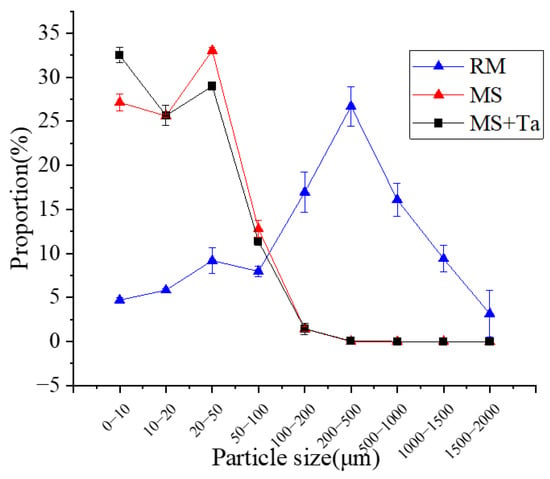
Figure 1
Open AccessArticle
Gene Mapping of a Yellow-to-Lethal Mutation Based on Bulked-Segregant Analysis-Seq in Soybean
by
, , , , , , , and
Agronomy 2024, 14(1), 185; https://doi.org/10.3390/agronomy14010185 - 15 Jan 2024
Abstract
Plant photosynthesis is mainly dependent on leaf color, and this has an impact on yield. Mutants lacking in chlorophyll have been analyzed to gain insight into the genetic processes involved in photosynthesis, chloroplast development, and chlorophyll metabolism. A yellow-to-lethal mutant, ytl, was
[...] Read more.
Plant photosynthesis is mainly dependent on leaf color, and this has an impact on yield. Mutants lacking in chlorophyll have been analyzed to gain insight into the genetic processes involved in photosynthesis, chloroplast development, and chlorophyll metabolism. A yellow-to-lethal mutant, ytl, was selected from the M6 generation of the 60Coγ ray irradiation-treated soybean cultivar Nannong 1138-2. The mutant exhibited reduced chlorophyll content, with the thylakoid structure disrupted. Segregation of the cross between Williams 82 (W82) and ytl indicated that a recessive allele controlled yellow-to-lethal traits. The bulked-segregant analysis (BSA)-Seq method performed preliminary mapping, followed by simple sequence repeat (SSR) marker validation and further mapping. The candidate gene was mapped to a 418 Kb region containing 53 genes. High-throughput sequencing and first-generation sequencing results showed a two bp deletion in the second exon of Glyma.08g106500, leading to a frameshift mutation in ytl. As a promising candidate gene, Glyma.08g106500 encoded a chloroplast-localized pentatricopeptide repeat (PPR) domain-containing protein involved in the assembly of chloroplast proteins. These results will contribute to cloning the mutant ytl gene and provide insight into the regulatory processes controlling photosynthesis and chloroplast development and growth in soybean.
Full article
(This article belongs to the Section Crop Breeding and Genetics)
►▼
Show Figures
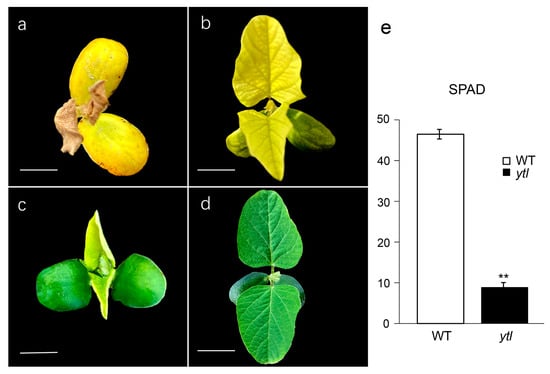
Figure 1
Open AccessArticle
Estimation of Soil Moisture Content Based on Fractional Differential and Optimal Spectral Index
by
, , , , , , , , , , , , and
Agronomy 2024, 14(1), 184; https://doi.org/10.3390/agronomy14010184 - 15 Jan 2024
Abstract
Applying hyperspectral remote sensing technology to the prediction of soil moisture content (SMC) during the growth stage of soybean emerges as an effective approach, imperative for advancing the development of modern precision agriculture. This investigation focuses on SMC during the flowering stage under
[...] Read more.
Applying hyperspectral remote sensing technology to the prediction of soil moisture content (SMC) during the growth stage of soybean emerges as an effective approach, imperative for advancing the development of modern precision agriculture. This investigation focuses on SMC during the flowering stage under varying nitrogen application levels and film mulching treatments. The soybean canopy’s original hyperspectral data, acquired at the flowering stage, underwent 0–2-order differential transformation (with a step size of 0.5). Five spectral indices exhibiting the highest correlation with SMC were identified as optimal inputs. Three machine learning methods, namely support vector machine (SVM), random forest (RF), and back propagation neural network (BPNN), were employed to formulate the SMC prediction model. The results indicate the following: (1) The correlation between the optimal spectral index of each order, obtained after fractional differential transformation, and SMC significantly improved compared to the original hyperspectral reflectance data. The average correlation coefficient between each spectral index and SMC under the 1.5-order treatment was 0.380% higher than that of the original spectral index, with mNDI showing the highest correlation coefficient at 0.766. (2) In instances of utilizing the same modeling method with different input variables, the SMC prediction model’s accuracy follows the order: 1.5 order > 2.0 order > 1.0 order > 0.5 order > original order. Conversely, with consistent input variables and a change in the modeling method, the accuracy order becomes RF > SVM > BPNN. When comprehensively assessing model evaluation indicators, the 1.5-order differential method and RF method emerge as the preferred order differential method and model construction method, respectively. The R2 for the optimal SMC estimation model in the modeling set and validation set were 0.912 and 0.792, RMSEs were 0.005 and 0.004, and MREs were 2.390% and 2.380%, respectively. This study lays the groundwork for future applications of hyperspectral remote sensing technology in developing soil moisture content estimation models for various crop growth stages and sparks discussions on enhancing the accuracy of these different soil moisture content estimation models.
Full article
(This article belongs to the Special Issue Current Research on Hyperspectral and Multispectral Imaging and Their Applications in Precision Agriculture Ⅱ)
►▼
Show Figures
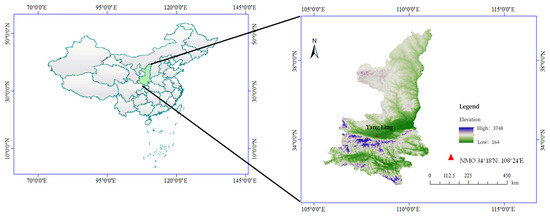
Figure 1
Open AccessArticle
Response of Evapotranspiration, Photosynthetic Characteristics and Yield of Soybeans to Groundwater Depth
Agronomy 2024, 14(1), 183; https://doi.org/10.3390/agronomy14010183 - 15 Jan 2024
Abstract
To clarify the physiological mechanism of different groundwater depths affecting soybean evapotranspiration, photosynthetic characteristics and yield, a field experiment with four groundwater depth levels (1 m (D1), 2 m (D2), 3 m (D3) and 4 m (D4)) was conducted through the groundwater simulation
[...] Read more.
To clarify the physiological mechanism of different groundwater depths affecting soybean evapotranspiration, photosynthetic characteristics and yield, a field experiment with four groundwater depth levels (1 m (D1), 2 m (D2), 3 m (D3) and 4 m (D4)) was conducted through the groundwater simulation system in 2021 and 2022. In this study, a quantitative analysis was conducted on the groundwater recharge and irrigation water demand and evapotranspiration (ET) of soybean fields with different treatments, and the effects of different treatments on soybean leaf area index (LAI), chlorophyll content index (SPAD), intercepted photosynthetic active radiation (IPAR), photosynthetic gas exchange parameters, dry matter accumulation (DMA) and yield were explored. The results showed the following: (1) Groundwater depth affected soybean ET and the source of ET. With the increase in groundwater depth, groundwater recharge and its contribution to ET gradually decreased, but the amount of irrigation required gradually increased, resulting in the ET as D1 > D4 > D2 > D3. (2) Soybean LAI, SPAD and IPAR were significantly affected by the different groundwater depths, of which the D1 treatment always maintained the maximum, followed by the D4 treatment, and the D3 treatment was the minimum. The photosynthetic gas exchange parameters under different treatments changed synergistically, showing significant differences in the flowering and podding stages, notably D1 > D4 > D2 > D3. Soybean DMA and yield first decreased and then increased with the increase in groundwater depth, and the average DMA and yield under the D1 treatment increased by 27.71%, 46.80% and 22.82% and 20.29%, 29.91% and 12.83% in the two years, respectively, compared to the D2, D3 and D4 treatments. (3) The structural equation model demonstrated that the groundwater depth indirectly affected the growth of soybean leaf area by affecting groundwater recharge, which in turn regulated soybean ET and photosynthetic capacity and ultimately affected DMA and yield. The above results showed that in the case of shallow groundwater depth (D1), the largest groundwater recharge promoted the growth of soybean leaf area and chlorophyll synthesis and increased the absorption and utilization of solar radiation. And it improved the leaf stomata conditions, accelerated the gas exchange between the plant and atmosphere, enhanced the photosynthetic production capacity and ET and achieved maximum DMA and yield. Soybean leaf growth and photosynthesis diminish with the increase in groundwater depth. In the case of deep groundwater depth (D4), the maximum irrigation improved the growth and photosynthetic performance of soybean leaves, which was favorable to ET, and ultimately led to increases in DMA and yield.
Full article
(This article belongs to the Special Issue Water-Saving in Agriculture: From Soil to Plant)
►▼
Show Figures
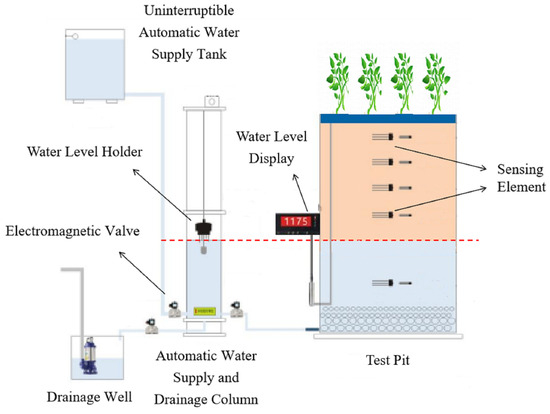
Figure 1
Open AccessArticle
Response of Bread Wheat Cultivars to Terminal Water Stress and Cytokinin Application from a Grain Phenotyping Perspective
Agronomy 2024, 14(1), 182; https://doi.org/10.3390/agronomy14010182 - 15 Jan 2024
Abstract
A better understanding of the responsiveness of grain phenotypic indices to terminal water stress (TWS) in wheat might help explain grain weight variations and determine which grain traits are most affected. A two-year field experiment (2020–2021 and 2021–2022) was conducted to identify how
[...] Read more.
A better understanding of the responsiveness of grain phenotypic indices to terminal water stress (TWS) in wheat might help explain grain weight variations and determine which grain traits are most affected. A two-year field experiment (2020–2021 and 2021–2022) was conducted to identify how TWS and exogenous cytokinin application might affect grain weight and grain dimensions in three bread wheat cultivars using high-throughput digital image phenotyping. The results showed that the effects of growing seasons, irrigation, and cultivars were significant on grain weight and phenotypic indices. In our study, TWS significantly reduced thousand grain weight (24.62%, 14.65%) and grain development in the width directions MinFeret, i.e., minimum caliper diameter (10.70%, 6.64%) and Minor, i.e., the minor axes of the best fitted ellipses to the grains (10.91%, 6.65%), or synthesized indices including Area/Perim. (9.01%, 5.42%), Area × Circ. (17.30%, 10.13%), Minor/Solid. (10.26%, 6.32%), MinFeret/Solid. (10.01%, 6.11%), Area × Solid (13.94%, 7.96%), Perim. × Circ. (9.07%, 5.42%), A1 (29.99%, 17.09%), and A2 (30.20%, 17.27%) in each growing season, respectively. Regardless of the factors causing these variations, a sustained relationship was found between thousand grain weight and phenotypic indices, with significant positive correlations. The stronger positive correlation between thousand grain weight and grain width indices (r ≥ 0.965) showed important implications for grain development and filling. The Torabi cultivar performed better than the Sirvan and Pishgam in both growing season conditions. In addition, the technical advantages of developing phenotyping approaches, the present study could contribute to a better physiological evaluation of wheat cultivars in multivariate environments.
Full article
(This article belongs to the Section Water Use and Irrigation)
►▼
Show Figures
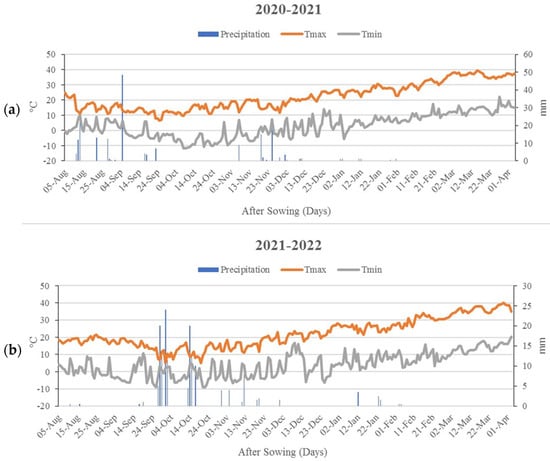
Figure 1
Open AccessArticle
Response of Matching Degree between Precipitation and Maize Water Requirement to Climate Change in China
Agronomy 2024, 14(1), 181; https://doi.org/10.3390/agronomy14010181 - 15 Jan 2024
Abstract
The synchronicity of rain and heat in the summer of China’s monsoon region provides sufficient water and heat resources for maize growth. However, the intra-annual distribution of precipitation and the probability of extreme precipitation have been inevitably altered by the ongoing climate change,
[...] Read more.
The synchronicity of rain and heat in the summer of China’s monsoon region provides sufficient water and heat resources for maize growth. However, the intra-annual distribution of precipitation and the probability of extreme precipitation have been inevitably altered by the ongoing climate change, thus affecting the matching degree between precipitation and crop water requirements (MDPCWR). Evaluating the extent to which the MDPCWR will change in the future is of great importance for food security and the sustainable management of water resources. In this study, considering that different growth stages of crops have different sensitivities to water stress, the AquaCrop model was used to calculate the MDPCWR more accurately. In addition, a cumulative distribution function-transform (CDF-t) method was used to remove the bias of 11 global climate models (GCMs) under two typical emission scenarios (SSP2-4.5 and SSP5-8.5) from phase six of the Coupled Model Intercomparison Project (CMIP6). A comprehensive investigation was conducted on how maize growth, water consumption, and the MDPCWR will respond to future climate change with CO2 concentration enrichment in the Huang–Huai–Hai (3H) region in China by driving a well-tested AquaCrop model with the bias-corrected GCMs outputs. The results indicate the following: (1) The CDF-t method can effectively remove seasonal bias, and it also performs well in eliminating the bias of extreme climate events. (2) Under the SSP2-4.5 scenario, the average maximum temperature will increase by 1.31 °C and 2.44 °C in 2021–2050 and 2051–2080, respectively. The average annual precipitation will increase up to 96.8 mm/year, but it will mainly occur in the form of heavy rain. (3) The increased maize evapotranspiration rate does not compensate for the decreased crop water requirement (up to −32 mm/year), due to a shorter growth cycle. (4) The farmland cultivation layer is not able to hold a significant amount of precipitation, due to the increased frequency of heavy rains, resulting in increased irrigation water requirements for maize over the next two periods, with the maximum value of 12 mm/year. (5) Under different scenarios, the projected future MDPCWR will decrease by 9.3–11.6% due to changes in precipitation patterns and crop water requirements, indicating that it will be more difficult for precipitation to meet the water demand of maize growing in the 3H region. The results can provide comprehensive information to understand the impact of climate change on the agricultural water balance and improve the regional strategy for water resource utilization in the 3H region.
Full article
(This article belongs to the Section Agroecology Innovation: Achieving System Resilience)
►▼
Show Figures
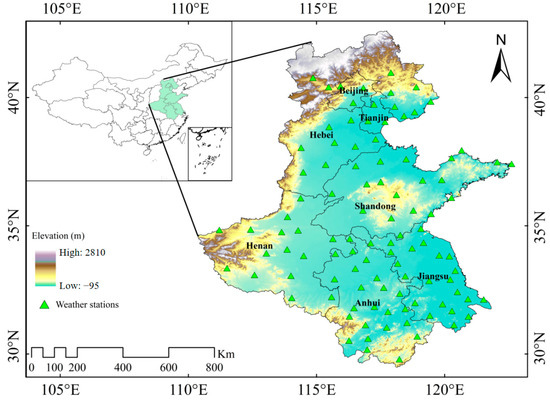
Figure 1
Open AccessArticle
Native Warm-Season Grass’s Response to Nitrogen Fertilization
Agronomy 2024, 14(1), 180; https://doi.org/10.3390/agronomy14010180 - 14 Jan 2024
Abstract
The identification of appropriate nitrogen (N) rates for native warm-season grasses (NWSG) is needed to inform forage management in the southeastern United States. Experiments were conducted in Knoxville and Springfield, TN, from 2015 to 2019, to evaluate dry matter (DM) yield, forage nutritive
[...] Read more.
The identification of appropriate nitrogen (N) rates for native warm-season grasses (NWSG) is needed to inform forage management in the southeastern United States. Experiments were conducted in Knoxville and Springfield, TN, from 2015 to 2019, to evaluate dry matter (DM) yield, forage nutritive value (FNV), the influence of temperature and precipitation on yield, and partial factor productivity (PFP) responses. Three NWSG species (big bluestem [BB; Andropogon gerardii Vitman], switchgrass [SG; Panicum virgatum L.], and eastern gamagrass [EG; Tripsacum dactyloides L.]) were grown at each location and harvested twice annually. Five N rates in the form of urea were applied annually in split applications. The yields for all species responded positively to nitrogen (p < 0.001) and the time of harvest (p < 0.001) at both sites, except for BB yield at Springfield; no consistent N effects were observed over years. Nitrogen affected the FNV (p < 0.001) of all species, increasing CP by three to five percentage points (p < 0.001). Yields across all species and locations responded positively to precipitation (p < 0.001) and temperature (p < 0.001). A moderate N amendment (<135 kg N ha−1 yr−1, based on PFP) can enhance the productivity of NWSG, but responses were site-dependent and influenced by temperature and precipitation.
Full article
(This article belongs to the Section Soil and Plant Nutrition)
►▼
Show Figures
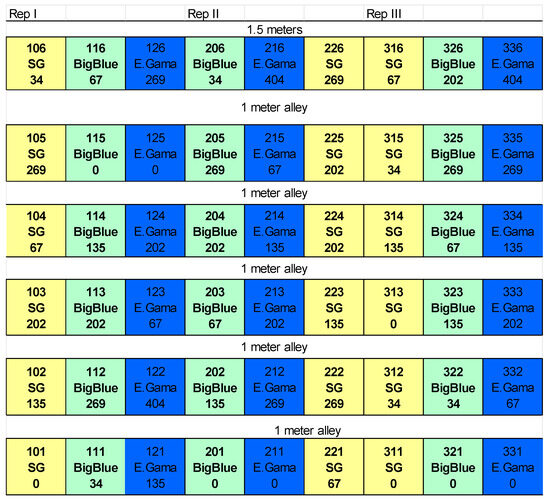
Figure 1
Open AccessArticle
Enhancing Soil Aggregation and Organic Carbon Retention in Greenhouse Vegetable Production through Reductive Soil Disinfestation with Straw and Fertiliser: A Comprehensive Study
by
, , , , , , , , and
Agronomy 2024, 14(1), 179; https://doi.org/10.3390/agronomy14010179 - 14 Jan 2024
Abstract
In greenhouse vegetable production, reductive soil disinfestation (RSD) effectively mitigates soil-borne diseases, yet its impact on the dynamics of soil organic carbon (SOC) has not been adequately examined. This study investigated the distribution of soil aggregates and the organic carbon retention mechanism following
[...] Read more.
In greenhouse vegetable production, reductive soil disinfestation (RSD) effectively mitigates soil-borne diseases, yet its impact on the dynamics of soil organic carbon (SOC) has not been adequately examined. This study investigated the distribution of soil aggregates and the organic carbon retention mechanism following intensive RSD treatment. Greenhouse experiments, including control (CK), wheat straw (RSD), and wheat straw with chemical fertilizer (RSD + NP) treatments, indicated augmentation in the formation of macro-aggregates (>2 mm and 0.25–2 mm) under RSD, particularly in the RSD + NP treatment. Silty clay particles transform into macro- and micro-aggregates. Fourier infrared spectroscopy highlighted the augmentation of carbon-containing functional groups in SOC, with aliphatic carbon accumulating in macro-aggregates and aromatic carbon in silt clay. Laboratory culture experiments employing different C/N ratios (RSD1 with wheat straw, RSD2 with kiwifruit branches) underscored the beneficial impact of low C/N ratio organic matter on coarse and fine macro-aggregate content, mean weight diameter, geometric mean diameter, and reduced silt clay. Low C/N ratios enhance SOC retention in large aggregates, while high ratios stabilise micro-aggregate carbon. This research underscores the severe degradation in continuous greenhouse cropping systems and emphasises RSD’s dual benefits—disease prevention and improved SOC retention. Implementing RSD requires careful consideration of organic material choices, specifically their C/N ratios, as a pivotal factor influencing SOC dynamics.
Full article
(This article belongs to the Section Soil and Plant Nutrition)
►▼
Show Figures
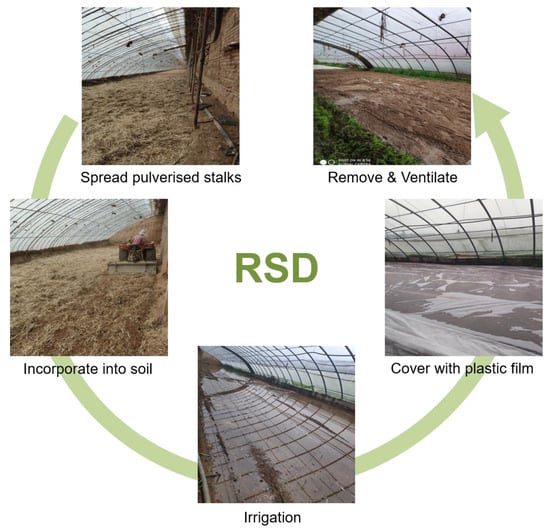
Figure 1
Open AccessArticle
Contribution to the Optimization of Methods for Vigor Seed Evaluation of Camelina sativa (L.) Crantz
by
, , , , , and
Agronomy 2024, 14(1), 178; https://doi.org/10.3390/agronomy14010178 - 14 Jan 2024
Abstract
Camelina, a traditional oil-producing plant, has gained global interest due to the high-quality oil found in its seeds. It has numerous applications, including human dietary consumption, aviation biofuel, and biodiesel production. Seed quality testing is crucial for identifying suitable seed batches for market
[...] Read more.
Camelina, a traditional oil-producing plant, has gained global interest due to the high-quality oil found in its seeds. It has numerous applications, including human dietary consumption, aviation biofuel, and biodiesel production. Seed quality testing is crucial for identifying suitable seed batches for market sale. Currently, vigor tests have been established for a limited selection of commercially cultivated plant species, including camelina. This study aims to assess seed vigor and contribute to the development and validation of methods/tests for reliable vigor assessment. The experiment used two camelina genotypes developed at the Institute of Field and Vegetables Crops in Novi Sad, Serbia. The findings revealed a noteworthy reduction in germination percentages for both genotypes across all the conducted tests, as compared to the conventional laboratory germination. Simultaneously, there was a notable increase in abnormal seedlings. However, no statistically significant differences in the values of growth parameters were observed among the applied tests. In summary, the reduced seed vigor values indicate potential issues with this trait, despite generally sound germination. Additionally, the preliminary findings and methodology developed for testing the camelina seed vigor highlighted the need for optimization when applying these tests to other species to ensure their reliability and applicability.
Full article
(This article belongs to the Special Issue Advances in the Industrial Crops)
►▼
Show Figures
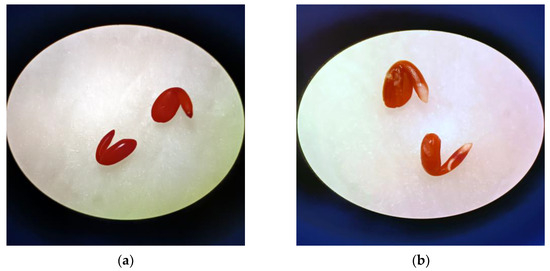
Figure 1
Open AccessArticle
Winter Cover Crops Affect Aggregate-Associated Carbon, Nitrogen and Enzyme Activities from Black Soil Cropland
Agronomy 2024, 14(1), 177; https://doi.org/10.3390/agronomy14010177 - 14 Jan 2024
Abstract
The thinning, leaning, and hardening of arable land in the black soil region of Northeast China has brought serious challenges to the sustainable development of agriculture. It is of great significance to explore suitable conservation tillage for the conservation and sustainable utilization of
[...] Read more.
The thinning, leaning, and hardening of arable land in the black soil region of Northeast China has brought serious challenges to the sustainable development of agriculture. It is of great significance to explore suitable conservation tillage for the conservation and sustainable utilization of black soil resources actively. The topsoil of the cropland in the northeastern part of the Songnen Plain with winter fallow (CK), planted alfalfa, and planted winter wheat was used as the research object to analyze the changes in the soil aggregate composition, nutrients, and enzyme activities before and after freeze–thaw, respectively, and to investigate the effect of winter cover crops on the improvement of the quality of the black soil cropland. Compared with the winter fallow field, (1) planting alfalfa significantly increased the mechanical stability of 1–2 mm and 0.25–1 mm particle size aggregates (about 3 times and 25 times over), and planting winter wheat increased the water stability of 0.25–1 mm particle size aggregates significantly (2.7 times over); (2) planting alfalfa and winter wheat increased the soil C/N ratio of >2 mm and 1–2 mm particle size aggregates, and the increment in the C/N ratio in >2 mm particle size aggregates remarkably increased, by 203.6% and 362.7%, respectively; (3) planting alfalfa significantly enhanced the soil invertase activity and urease activity in >2 mm and 0.25–1 mm particle size aggregates, and planting winter wheat significantly enhanced the catalase activity in 0.25–1 mm particle size aggregates. In conclusion, planting winter cover crops during the winter fallow period can maintain and promote the mechanical and water stability of medium and large (0.25–1 mm,1–2 mm) soil aggregates, increase the carbon content and C/N ratio of larger (1–2 mm, >2 mm) aggregates, and enhance the enzyme activity of small and medium (0.25–1 mm, <0.25 mm) aggregates to varying degrees. The results of the study can provide a reference for the promotion of basic research on and technology for winter cover crops in the black soil region.
Full article
(This article belongs to the Special Issue Effects of Cover Crops, Crop Rotation, and Intercropping on Natural Soil Fertility)
►▼
Show Figures
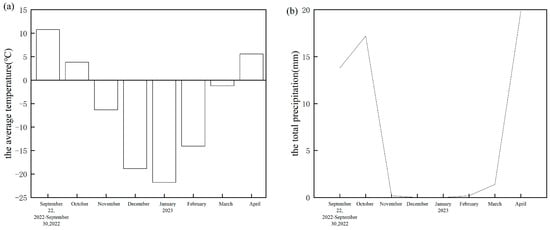
Figure 1
Open AccessArticle
Mechanical Weed Control: Sensor-Based Inter-Row Hoeing in Sugar Beet (Beta vulgaris L.) in the Transylvanian Depression
Agronomy 2024, 14(1), 176; https://doi.org/10.3390/agronomy14010176 - 13 Jan 2024
Abstract
Precision agriculture is about applying solutions that serve to obtain a high yield from the optimization of resources and the development of technologies based on the collection and use of precise data. Precision agriculture, including camera-guided row detection and hydraulic steering, is often
[...] Read more.
Precision agriculture is about applying solutions that serve to obtain a high yield from the optimization of resources and the development of technologies based on the collection and use of precise data. Precision agriculture, including camera-guided row detection and hydraulic steering, is often used as an alternative because crop damage can be decreased and driving speed can be increased, comparable to herbicide applications. The effects of different approaches, such as uncontrolled (UC), mechanical weed control (MWC), herbicide weed control (HWC), and mechanical + herbicide control (MWC + HWC), on weed density and yield of sugar beet were tested and evaluated in two trials (2021 and 2022) in South Transylvania Depression at the tested intervals BBCH 19 and 31. Weed control efficacy (WCE) depends on the emergence of the weeds and a good timing of weed controls in all the trials and methods, though the highest yield of sugar beet roots was recorded in the treatment MWC + HWC, with an increase up to 12–15% (56.48 t ha−1) yield from HWC (50.22 t ha−1) and a yield increase of more than 35–40% than MWC (42.34 t ha−1). Our trials show that it is possible to increase yield and have fewer chemical applications with the introduction of new precision technologies in agriculture, including sensor-guided mechanical controls.
Full article
(This article belongs to the Section Weed Science and Weed Management)
►▼
Show Figures
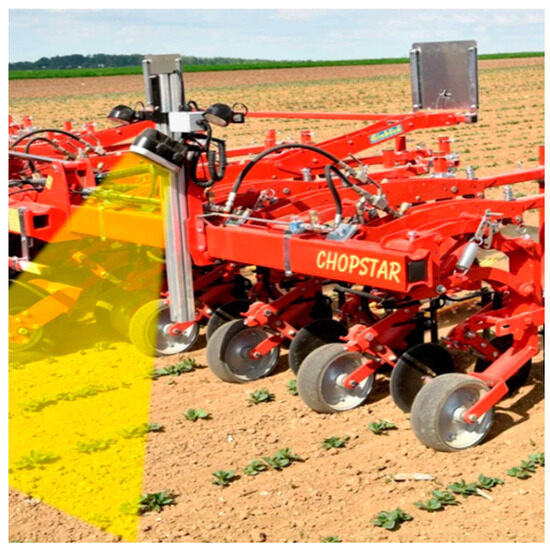
Figure 1
Open AccessArticle
Comparing Laboratory and Satellite Hyperspectral Predictions of Soil Organic Carbon in Farmland
Agronomy 2024, 14(1), 175; https://doi.org/10.3390/agronomy14010175 - 12 Jan 2024
Abstract
Mapping soil organic carbon (SOC) accurately is essential for sustainable soil resource management. Hyperspectral data, a vital tool for SOC mapping, is obtained through both laboratory and satellite-based sources. While laboratory data is limited to sample point monitoring, satellite hyperspectral imagery covers entire
[...] Read more.
Mapping soil organic carbon (SOC) accurately is essential for sustainable soil resource management. Hyperspectral data, a vital tool for SOC mapping, is obtained through both laboratory and satellite-based sources. While laboratory data is limited to sample point monitoring, satellite hyperspectral imagery covers entire regions, albeit susceptible to external environmental interference. This study, conducted in the Yuncheng Basin of the Yellow River Basin, compared the predictive accuracy of laboratory hyperspectral data (ASD FieldSpec4) and GF-5 satellite hyperspectral imagery for SOC mapping. Leveraging fractional order derivatives (FODs), various denoising methods, feature band selection, and the Random Forest model, the research revealed that laboratory hyperspectral data outperform satellite data in predicting SOC. FOD processing enhanced spectral information, and discrete wavelet transform (DWT) proved effective for GF-5 satellite imagery denoising. Stability competitive adaptive re-weighted sampling (sCARS) emerged as the optimal feature band selection algorithm. The 0.6FOD-sCARS RF model was identified as the optimal laboratory hyperspectral prediction model for SOC, while the 0.8FOD-DWT-sCARS RF model was deemed optimal for satellite hyperspectral prediction. This research, offering insights into farmland soil quality monitoring and strategies for sustainable soil use, holds significance for enhancing agricultural production efficiency.
Full article
(This article belongs to the Special Issue Application of Remote Sensing and GIS Technology in Agriculture)
►▼
Show Figures
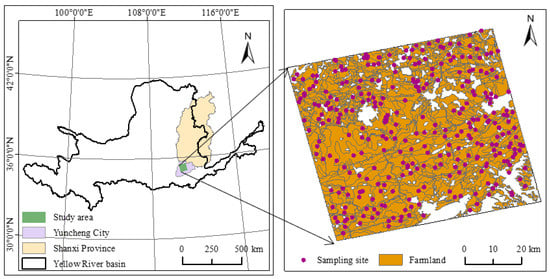
Figure 1

Journal Menu
► ▼ Journal Menu-
- Agronomy Home
- Aims & Scope
- Editorial Board
- Reviewer Board
- Topical Advisory Panel
- Instructions for Authors
- Special Issues
- Topics
- Sections & Collections
- Article Processing Charge
- Indexing & Archiving
- Editor’s Choice Articles
- Most Cited & Viewed
- Journal Statistics
- Journal History
- Journal Awards
- Society Collaborations
- Conferences
- Editorial Office
Journal Browser
► ▼ Journal BrowserHighly Accessed Articles
Latest Books
E-Mail Alert
News
2 January 2024
MDPI Insights: The CEO's Letter #7 - Nobel Laureates Entrust MDPI with Their Research
MDPI Insights: The CEO's Letter #7 - Nobel Laureates Entrust MDPI with Their Research
21 December 2023
Meet Us at the International Plant & Animal Genome Conference (PAG 31), 12–17 January 2024, San Diego, USA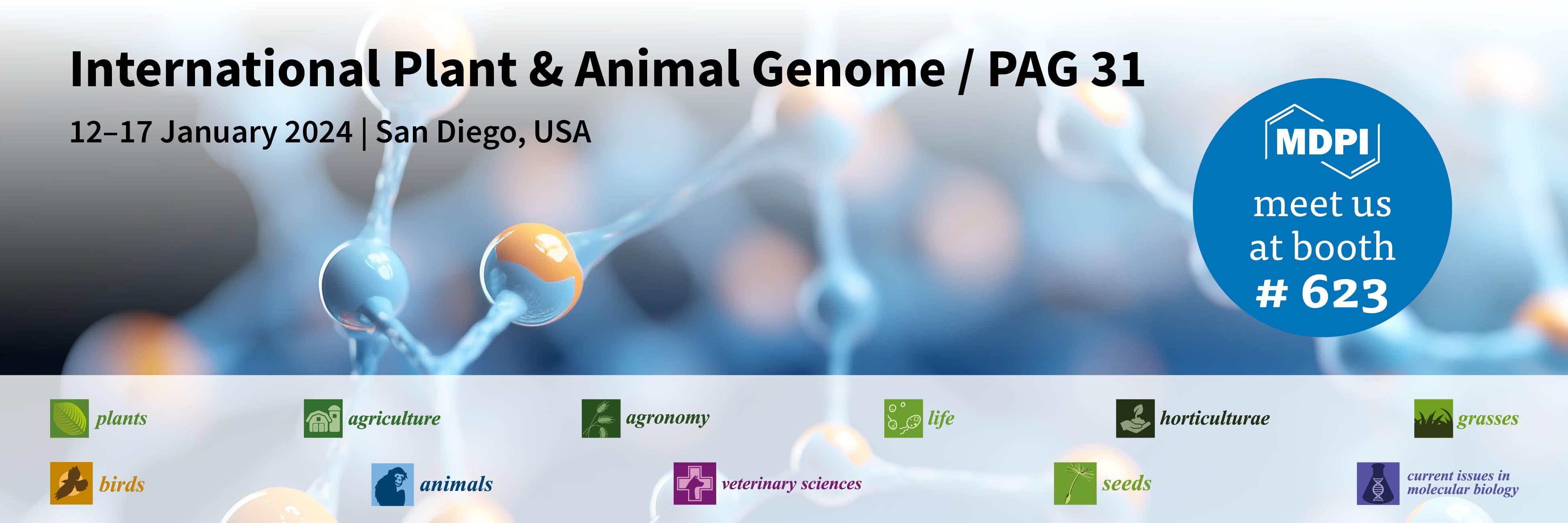
Meet Us at the International Plant & Animal Genome Conference (PAG 31), 12–17 January 2024, San Diego, USA

Topics
Topic in
Agriculture, Agronomy, Forests, Gastronomy, Grasses, Horticulturae, Sustainability
Mediterranean Biodiversity
Topic Editors: Luigi De Bellis, Genuario Belmonte, Massimiliano Renna, Elena Ciani, Monica Marilena Miazzi, Andrea PieroniDeadline: 29 February 2024
Topic in
Horticulturae, Plants, Agronomy, Agriculture, Sustainability
Soil Fertility and Plant Nutrition for Sustainable Agriculture
Topic Editors: Othmane Merah, Purushothaman Chirakkuzhyil Abhilash, Magdi T. Abdelhamid, Hailin Zhang, Bachar ZebibDeadline: 10 March 2024
Topic in
Climate, Ecologies, Land, Remote Sensing, Agronomy
What Climate Adaptation Looks Like: Improving Healthy Landscape
Topic Editors: Qianqian Zhang, Jinman Wang, Nisha Bao, Yang Wang, Salim LamineDeadline: 31 March 2024
Topic in
Agronomy, Agriculture, Crops, Seeds
Advances in Industrial Crops Physioecology and Sustainable Cultivation
Topic Editors: Wei Hu, Zhiguo Zhou, Wenqing ZhaoDeadline: 30 April 2024

Conferences
Special Issues
Special Issue in
Agronomy
From Microbial Interactions to New-Concept Biopesticides and Biofertilizers
Guest Editor: Nazrul IslamDeadline: 20 January 2024
Special Issue in
Agronomy
It Runs in the Family: The Importance of the Lamiaceae Family Species
Guest Editor: Antonios ChrysargyrisDeadline: 25 January 2024
Special Issue in
Agronomy
Bio-Based Fertilizers in Agriculture: New Opportunities and Challenges
Guest Editors: Francesc Xavier Prenafeta Boldú, Albert Magrí, Jaume BoixaderaDeadline: 15 February 2024
Special Issue in
Agronomy
A Circular Economy: Chemical, Microbiological and Environmental Implications of Mineral and Organic Fertilizers Use in Soils
Guest Editor: Monika Mierzwa-HersztekDeadline: 20 February 2024
Topical Collections
Topical Collection in
Agronomy
Advances of Agricultural Robotics in Sustainable Agriculture 4.0
Collection Editors: Xiangjun Zou, Yunchao Tang, Junfeng Gao, Liang Gong, Simon van Mourik, Ya Xiong
Topical Collection in
Agronomy
Machine Learning in Digital Agriculture
Collection Editors: Thomas Scholten, Karsten Schmidt, Ruhollah Taghizadeh-Mehrjardi
Topical Collection in
Agronomy
A Series of Special Reviews and Topic Analyses That Explore Major Trends and Challenges in Agronomy
Collection Editors: Peter Langridge, Leslie A. Weston, Ilias Travlos
Topical Collection in
Agronomy
Agro-Ecology for Grassland-Based Farming Systems
Collection Editor: Gianni Bellocchi




